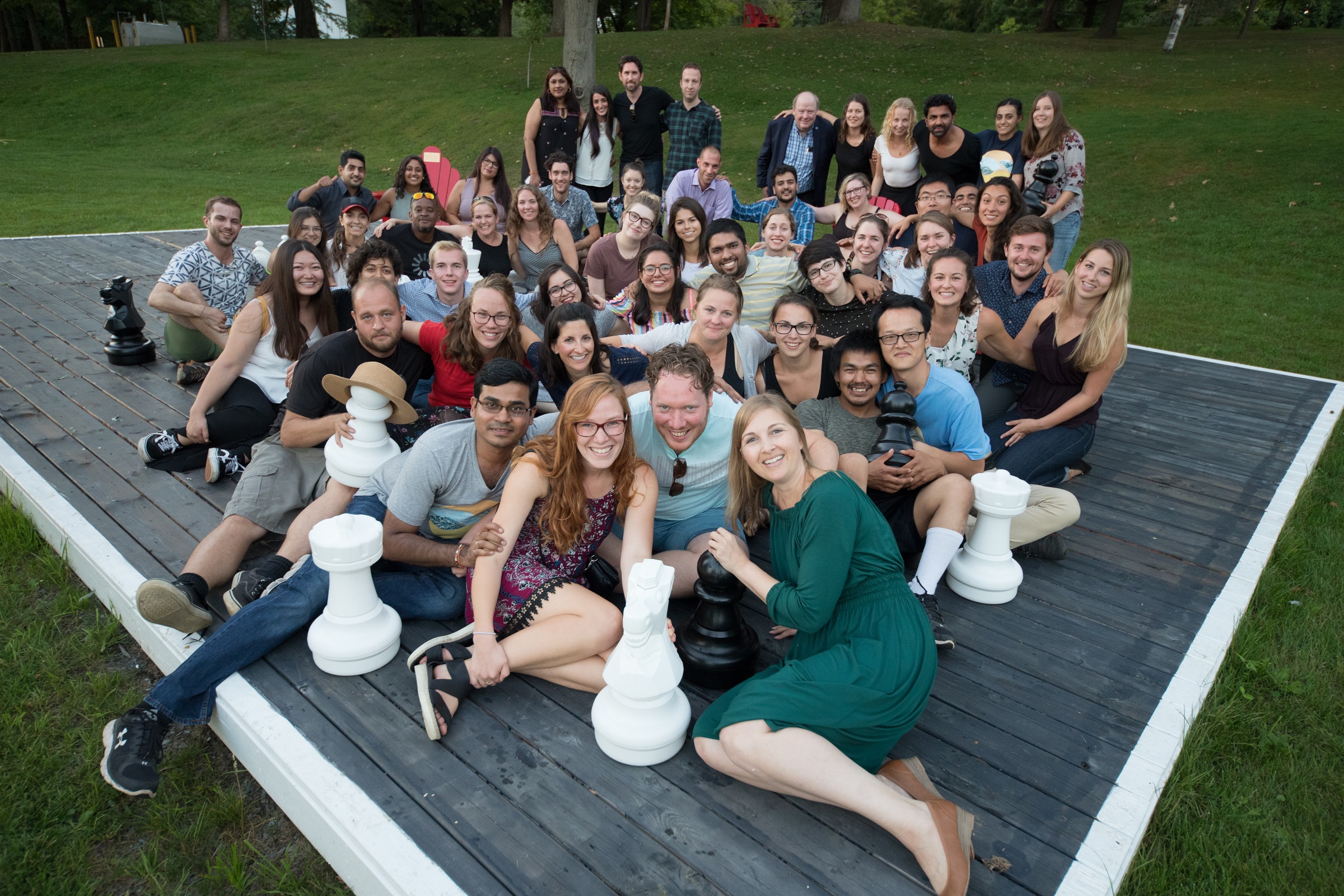The Southern Ontario Water Consortium was pleased to sponsor the participation of three young professionals in a unique experience created by Waterlution: the Water Innovation Lab (WIL) Canada. The event took place in September, 2018 in and around the Queen’s Biological Station near Kingston, ON.
SOWC was able sponsor participation by three graduate students that have been engaged with industry-led collaborative projects through the Advancing Water Technologies (AWT) program. The selected candidates were Kimia Aghasadeghi (University of Waterloo), Taryn Fournie (Western University), and Chengjin Wang (University of Toronto).
SOWC asked Kimia, Taryn, and Chengjin to share what they learned from this innovative training on leadership and communication skills and from working on water-related projects with other young professionals from around the world; and how they are going to apply them in their future life and work.
Kimia Aghasadeghi
I am a research engineer at University of Waterloo, and my work is focused on corrosion inhibition in lead service lines.
How would you describe the program? I would describe the water innovation lab as a perfect assembly of people greatly passionate about water, gathered in one amazing location (Queen’s University Biological Station) to tackle some of the greatest water challenges in Canada. After several days of being exposed to different aspects of water and the Great Lakes through site tours, expert presentations and even a birch canoe building workshop, we were trained on how to go about solving complex water problems by systematic thinking. We then formed multidisciplinary teams and picked a water problem to define a one-year project around. We were encouraged to realize our radius of impact to set feasible goals for our projects. We all then pitched our project ideas and competed for seed funding to continue our projects.
What was the key outcome for you? As a member of one of the winning groups, with the help and encouragement of WIL mentors, I am currently working on the implementation of the project idea that we developed in WIL.
Taryn Fournie
I am a PhD student in environmental engineering at Western University. My research is looking at a new method of treating biosolids from Wastewater Treatment Plants and the potential for land application of the post-treatment ash as a fertilizer.
What attracted you to the program? Living and growing up around the Great Lakes has distilled in me a deep passion for protecting our water resources. When I learned about the Water Innovation Lab and their goal of bringing together interdisciplinary groups to address local and international issues relating to water quality, access and sustainability I knew that this was an opportunity that I needed to partake in.
What was the key outcome for you? Participating in WIL 2018 gave me the opportunity to collaborate and learn from extraordinary individuals from a vast array of professions, backgrounds, countries, and cultures. WIL was able to bring all these individuals together with a common goal; to address some of the seemingly daunting water related issues facing our world today. Attending WIL has taught me that the broad perspective that I thought I possessed when problem solving is much narrower and more biased than I realized. I am extremely grateful to have had the opportunity to participate in WIL 2018. The lessons that I have learned, the experiences I had, and the friendships and networks that I formed have helped me grow and improve.
Chengjin Wang
I am a Postdoctoral Fellow at the University of Toronto, and my work is focused on advanced oxidation processes in the drinking water treatment.
What was the key outcome for you? To me (a technical person spending most of my time in the lab) this workshop was an eye-opening opportunity to see the big picture and to see how I fit in. During the workshop, I worked with other young professionals on a project to design water quality monitors for Canada’s rural areas. When my peer colleagues started to contribute from their perspectives and using their expertise, I was impressed to see that the project was not a purely technical problem but had so many “dimensions” and “layers” (e.g., cultural, economic, regulatory, technical, and political). It was inspiring to see that sometimes the same idea may look perfect from one perspective but not so much from the other one. This experience taught me to think holistically and prompted me to work in a more collaborative way in my future work.


